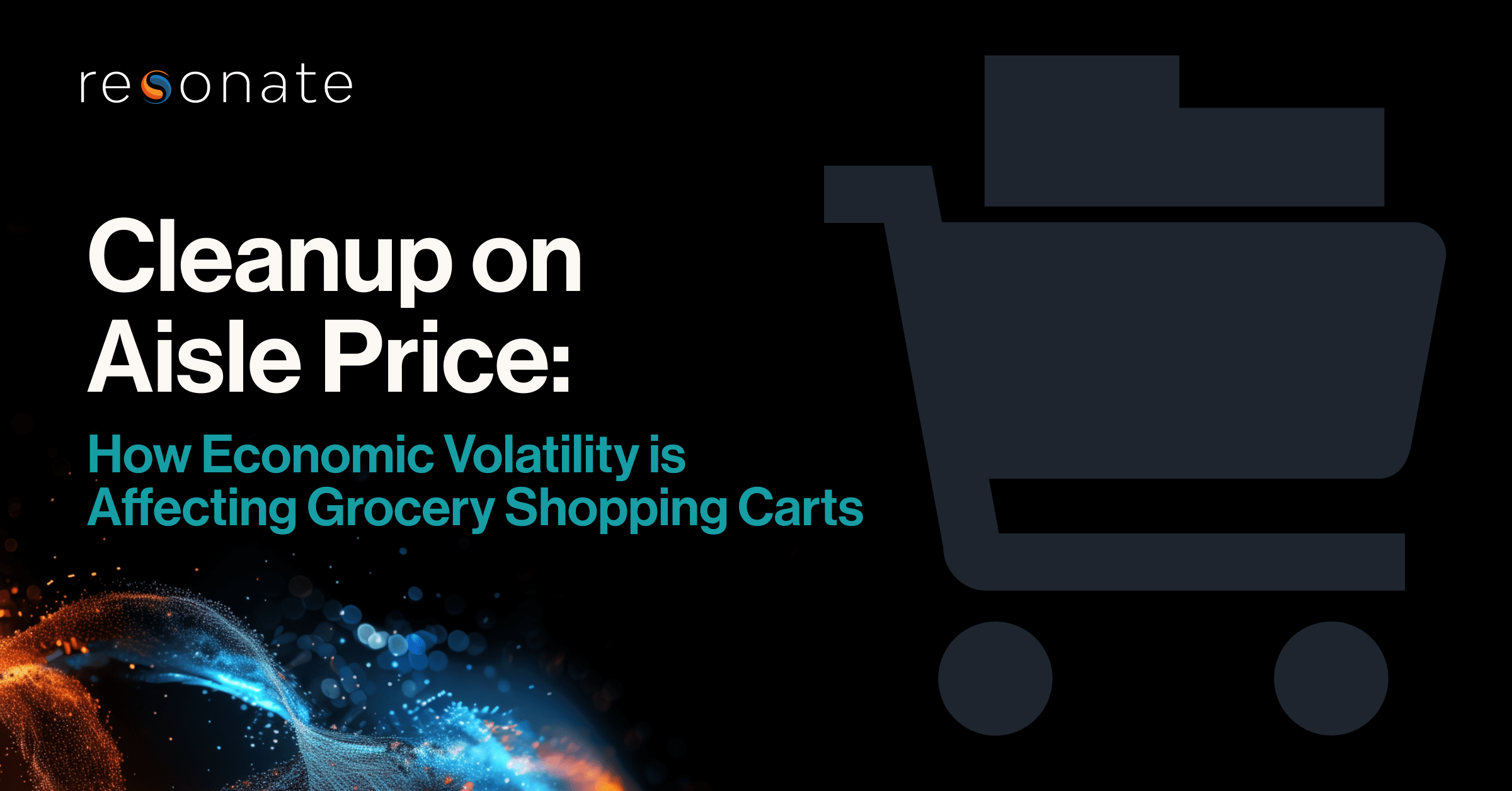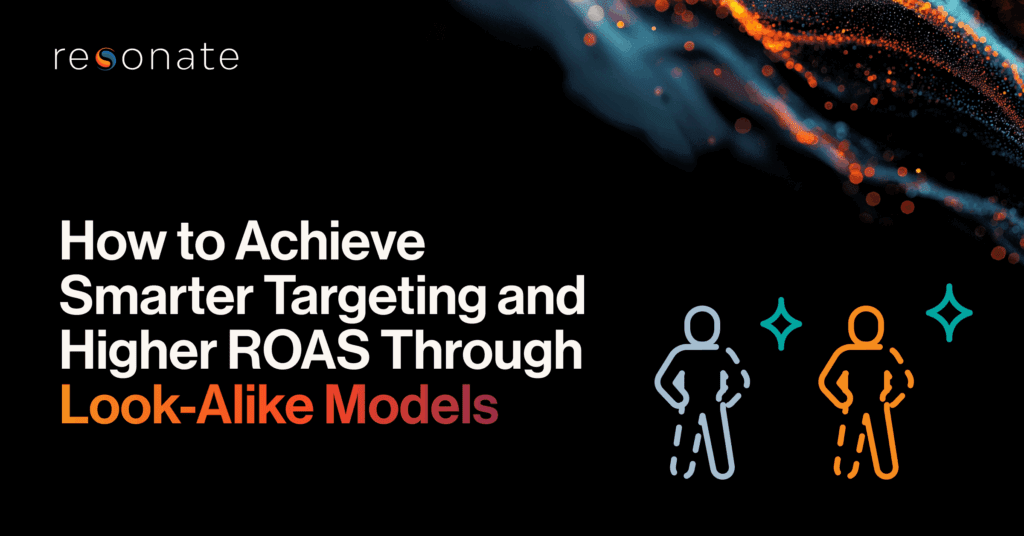Summer 2025 has been a challenging one for retailers and political campaign professionals alike. Tariffs have put pressure on consumers’ wallets, eating away at their ability to save money, slowing down spending, and increasing the number of postponed vacations and household improvements (Resonate June 2025 Consumer Trends Report). Many well-known retail brands, including Walmart, have been forced to raise prices to cope with the tariffs, squeezing customers further. The result has been, at best, mixed: Some companies have seen a significant slowdown, while others are experiencing growth, but not as much as they were hoping for at the start of the year.
Perhaps nowhere have tariffs, prices, and politics intersected quite as neatly as CPG, or, more specifically, groceries. Regardless of how they choose to save money—whether it’s by buying store-brand items instead of name-brand or buying in bulk with a warehouse retailer like Costco—food is an essential purchase. And despite the promises President Trump made on the campaign trail to lower grocery prices, the opposite has happened, and there’s more to come. The White House recently set a new tariff deadline of August 1, and the Tomato Suspension Agreement between the US and Mexico expired on July 14, resulting in American retailers having to pay a 17% tariff on Mexican-grown tomatoes unless another agreement is put in its place.
The good news is that right now, the economic situation isn’t as dire as some feared. And by utilizing high-performance data to make informed decisions, marketers and campaigners can keep pace with changes in consumer sentiment and behavior, the political landscape, and the CPG retail market. Ahead of the August 2025 Consumer and Voter Trends Reports, this article serves as a sound check for professionals looking to understand consumer sentiments and behaviors around groceries, SNAP benefits, and more.
SNAP Recipients
Currently, just over 38M Americans receive SNAP (Supplemental Nutrition Assistance Program) benefits, more commonly known as food stamps. In the last month, they’ve faced heightened food insecurity, not only due to high grocery prices and the specter of higher ones in the near future, but also due to recent legislation that expands the work requirements to receive the benefits.
This audience has a lot of concerns for the next six months. Chief among these is the possibility of being evicted: 22% are three times as likely as the average American to worry about this event.
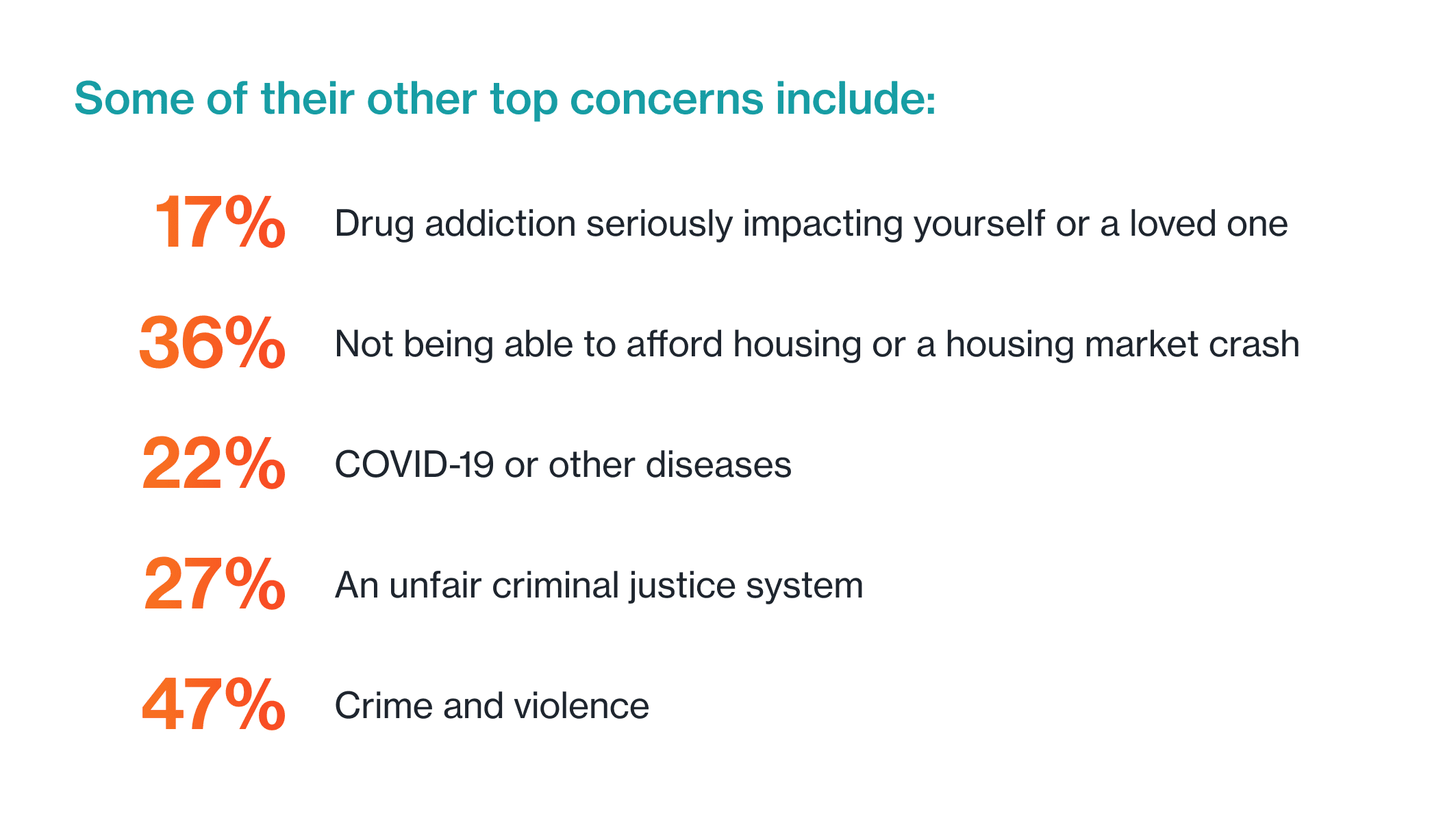
This range of concerns suggests that this is an audience that’s dealing with a lot of serious issues and that they have a lot on their minds. For instance, while health concerns are generally down across the board for most Americans, as seen in the June 2025 Resonate Consumer and Voter Trends Reports, for this group they’re top of mind. This could be because if they might not have a job that offers paid sick leave or even any kind of generous sick leave policy, so falling ill puts their SNAP benefits in jeopardy.
Despite President Trump’s name being attached to the One Big Beautiful Bill, which critics have cited as being responsible for the possibility of people losing their food stamps, 45% of SNAP recipients are unsure how they feel about his political policies or his personality and behavior.
With an estimated 80% of Americans on food stamps at or below the poverty line, it’s unsurprising that this audience has made a lot of changes in response to inflation, tariffs, and the ensuing high prices. Resonate data confirms these individuals are often cash-strapped: 49% make $25K or less per year. Two areas they over index for are housing and education: 7% moved to a new residence to save money, while 6% have taken steps to considerably reduce their education expenses. A significant 17% have gone into debt to manage their financial situation.
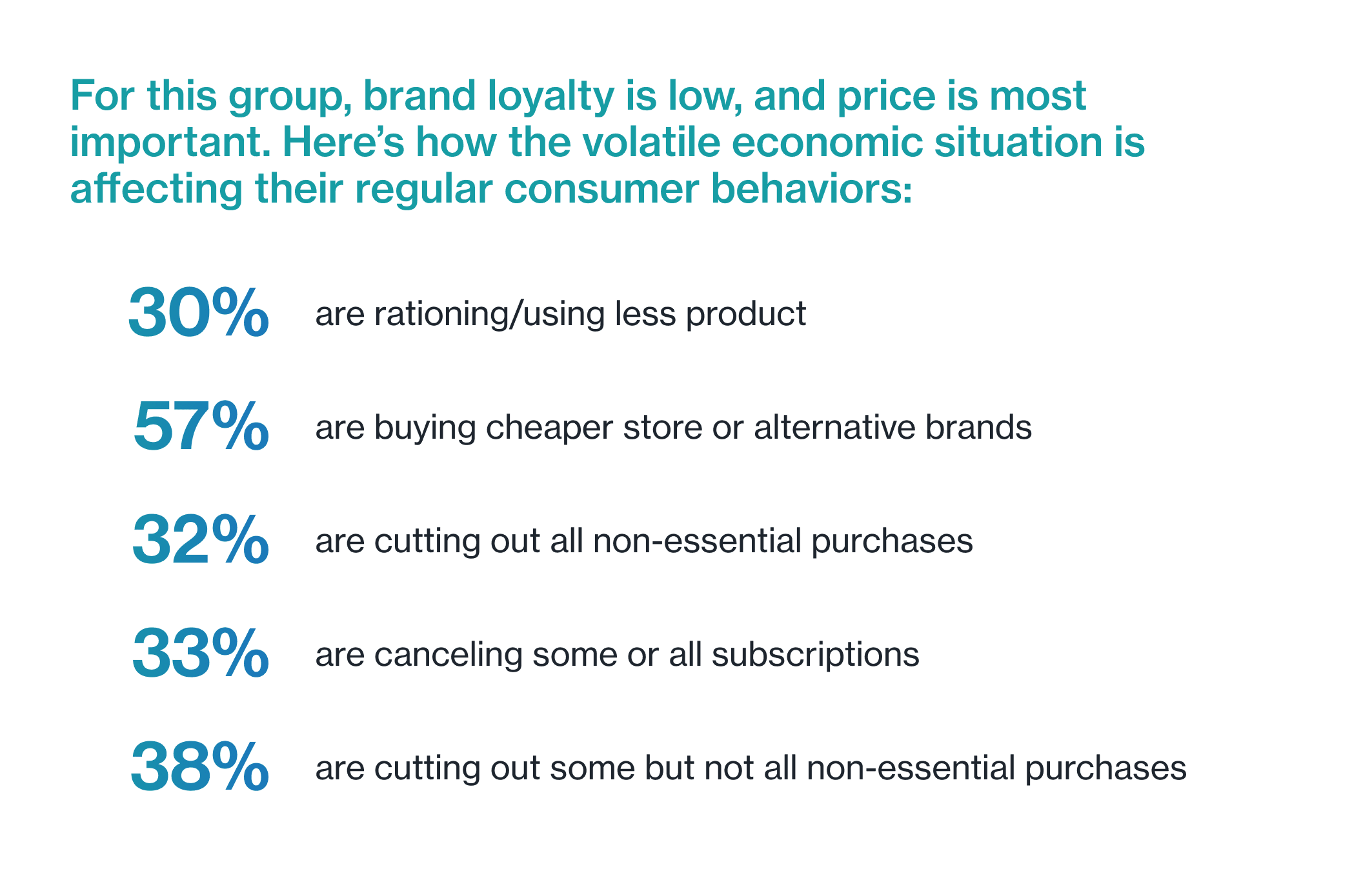
When targeting this audience, whether you’re a retailer or a political campaigner, Resonate has data that that helps you focus not just on an audience’s current behavior, but on their sentiments about public figures, corporate responsibility for inflation, brand loyalty, and more. Our personal values and other nuanced insights will help you build campaigns that will target the right people at the right time with the right message, one that focuses on what they really care about.
Frequent Grocery Store Shoppers
These consumers make five or more trips to the grocery store each month—they’re the ones who feel personally affronted when something is moved from its usual spot. This audience is big: There are 81.8M Frequent Grocery Store Shoppers.
While their average household income ranges across the board, 84% of these shoppers make $150K or less annually. This gives many of them more to spend than their cash-strapped SNAP recipient counterparts, and it’s reflected accordingly. Although they, too, have made changes in response to higher prices, the Frequent Grocery Store Shoppers’ actions are different and much more focused on things like brand loyalty than on daily survival.
For the Frequent Grocery Store Shoppers, 16% changed brand loyalty because the price increased. However, they’re not really rationing their product use or buying cheaper store or alternative brands en masse.
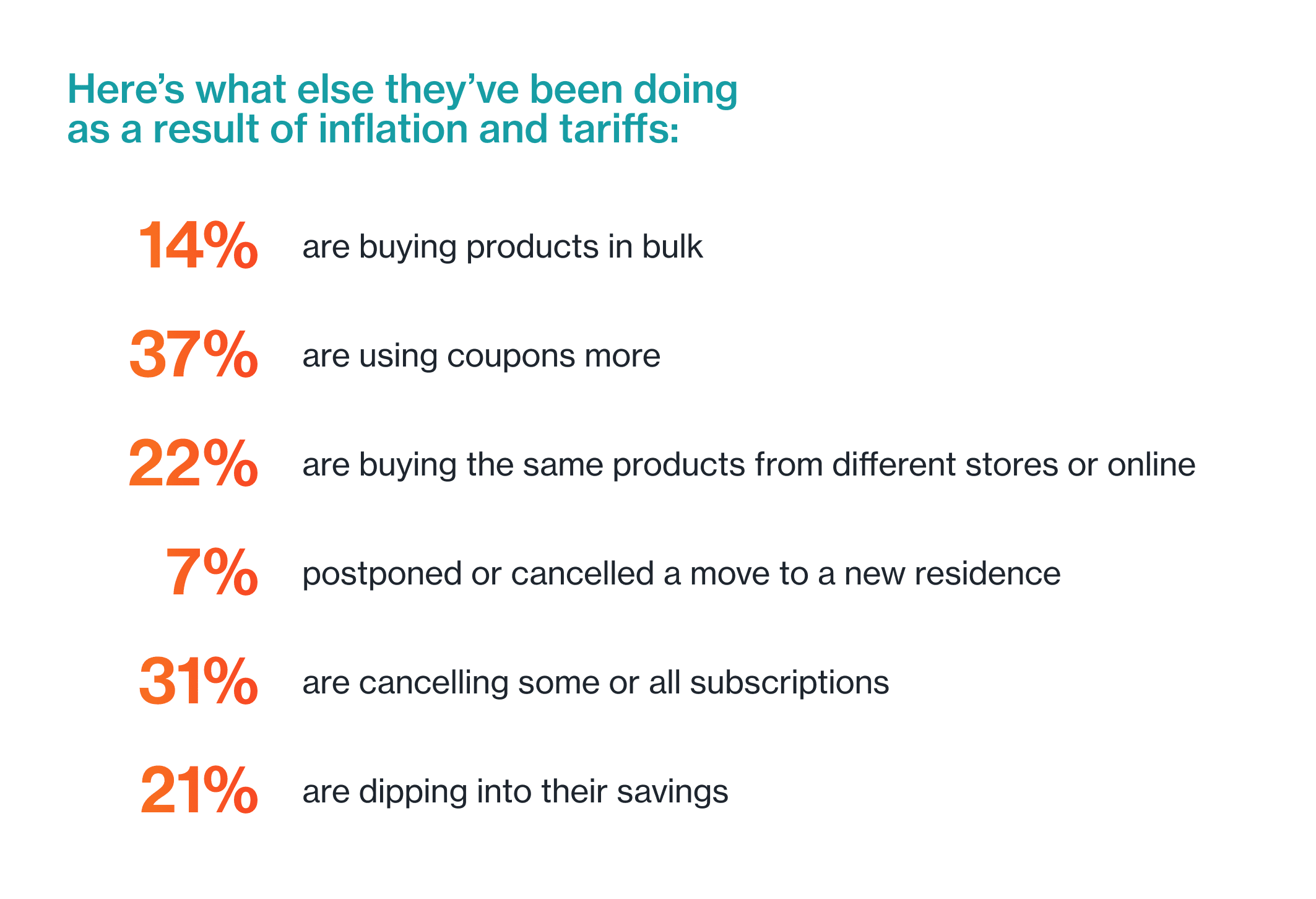
Aside from these changes and from their willingness to renege on brand loyalty once the price surpasses a certain personal threshold, this audience is currently in somewhat of a holding pattern. 34% haven’t taken any actions due to higher prices.
Politically, inflation and tariffs aren’t necessarily top of mind for the Frequent Grocery Store Shoppers. In fact, 38% support tariffs on all imports and extra on China, 39% strong oppose tariffs, and 23% are persuadable.
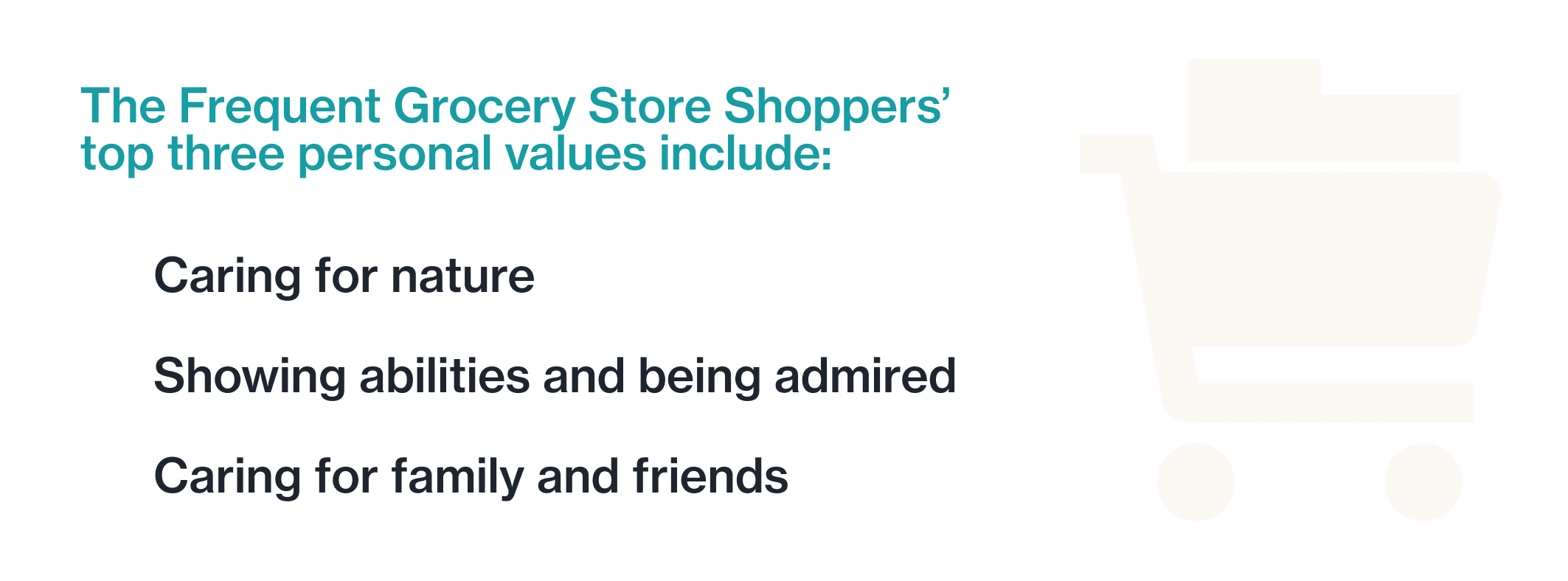
Consider using themes of caring, nurturing, nature conservation, and being admired and successful in your creative and messaging to effectively engage with this audience.
Activate more precise audiences—built from AI-powered, dynamic consumer data. Resonate audiences are continuously refreshed and built to perform—like driving a 23% reduction in cost per conversion—so you can align audience, message, and media to boost engagement and campaign results across every channel.
Get the data you need to understand not just how your audience is behaving, but why. See the Resonate difference for yourself: Reach out to schedule a consultation with a data expert today.
